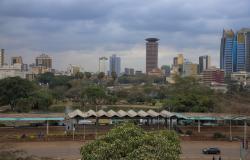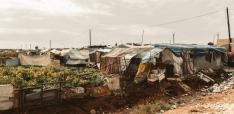Is Kenya the Canary in the Sovereign Debt Coal Mine? How a Revamped US Debt Strategy Could Help

Tim Hirschel-Burns and Marina Zucker-Marques call for an expansion for the scope of the Nairobi-Washington Vision to help countries regain financial stability and investments in a brighter future.
During Kenyan President William Ruto’s state visit in May, the US and Kenya announced the Nairobi-Washington Vision, a proposal for the international community to step up and support debt-distressed countries seeking to build clean, resilient economies. This announcement marked Kenya as the lead example for the US’s new approach to sovereign debt. But last week, a month after the Vision was officially presented, Kenya’s Parliament was on fire.
Mass protests were sparked by a bill that would hike taxes, with Kenya’s government hoping the new revenue would help it keep up with crushing debt payments. President Ruto eventually retracted support for the bill, but not before police had fired on protesters and 39 people were killed. He has now proposed spending cuts equivalent to the abandoned tax increases.
While a major speech by senior US Treasury Department official Jay Shambaugh and the subsequent Nairobi-Washington Vision made a correct diagnosis – debt is sucking too much money out of developing countries while the money flowing into them is insufficient in quantity and quality – the suggested treatment needs to be revised. Specifically, the US will need to ensure three things are available to Kenya and other countries facing similar challenges: debt relief, affordable finance, and patient, growth-enhancing finance.
First, the US approach to debt and the Nairobi-Washington Vision should encompass the possibility of debt relief in countries that need it. Some economists had hoped that Kenya would provide an example of how debt-distressed countries could get by without debt relief if they have access to ‘bridge’ finance while implementing fiscal adjustments.
However, for Kenya, combining bridge finance with fiscal consolidation has proven to be neither a socially nor economically viable solution. In an effort to avoid default earlier this year, Kenya borrowed $1.5 billion from private lenders to repay a $2 billion bond that was coming due this month. However, the private sector would only lend to Kenya at an interest rate of 10.375 percent, a rate so high it is sure to exacerbate debt problems in the future. Kenya also sought out support from the International Monetary Fund (IMF) and World Bank, but the IMF pushed for Kenya to adopt the fiscal austerity measures that sparked last week’s protests, and World Bank lending often struggles to quickly stimulate growth.
Shocks from the COVID-19 pandemic, rising interest rates, a depreciating shilling, and droughts and floods tipped Kenya’s debt vulnerabilities over the edge. But restructuring Kenya’s debts under the Group of 20 (G20) Common Framework is such an unappealing option that using 61 cents of every dollar to service their debt may have appeared to be a better solution. Enabling debt relief on the scale and pace needed requires fixing the Common Framework to provide an adequate mix of carrots and sticks to ensure all creditors participate. As a major bilateral creditor, home to many private creditors, and the largest shareholder in the IMF and World Bank, the US must push for debt relief.
Second, the US must ensure developing countries can access much more affordable finance than is currently available. While measures like guarantees can bring down the cost of private capital, market borrowing will still often be too expensive, especially in this high interest rate environment. Sources of public finance will have to be significantly expanded. The Nairobi-Washington Vision rightly emphasized the importance of international financial institutions providing support. But unless their resources are scaled up, it will be too small to make a dent, as it has been in Kenya’s case.
Third, the US needs to use its development finance and diplomatic influence to promote stable and resilient economic growth. If new loans come into developing countries but their growth—and especially their export growth—does not keep up with the interest rates, they will soon fall back into debt distress. Similarly, when international capital is volatile it can cause more harm than good. New development finance should aim to support countries to produce higher-value goods. Similarly, financing from the IMF should allow for investments that put economies on the right path, rather than stifling growth through excessive spending cuts and poorly targeted tax increases.
The Nairobi-Washington Vision aims to ensure countries do not have to choose “between paying back creditors and making critical investments in their economy and people.” But right now, many countries are being forced into exactly that choice: in the next five years, 47 countries may breach debt solvency thresholds as they invest in climate and development priorities. As National Security Advisor Jake Sullivan recently said, “the single thing that is most holding back developing countries right now…is getting out from crushing debt.”
By expanding the scope of the Nairobi-Washington Vision, the US can help countries regain financial stability while investing in a brighter future. It’s not too late to change course.
Tim Hirschel-Burns is Policy Liaison with the Global Economic Governance Initiative at the Boston University Global Development Policy Center.
Marina Zucker-Marques is a Senior Academic Researcher with the Global Economic Governance Initiative at the Boston University Global Development Policy Center and serves as Co-Chair for the Brazil T20 Task Force 3 on reforming the International Financial Architecture.
Photo by Justin Brian


